Plastic Recycling SystemsShredding, Separation, Wash, Granulation
The RotaJet by PRI™ plastics recycling systems can be integrated as a full-scale system to process plastics from start to finish. Plastic shredding, separation, wash, rinse, drying, granulation and dispensing equipment.

Full-Scale Integrated Recycling
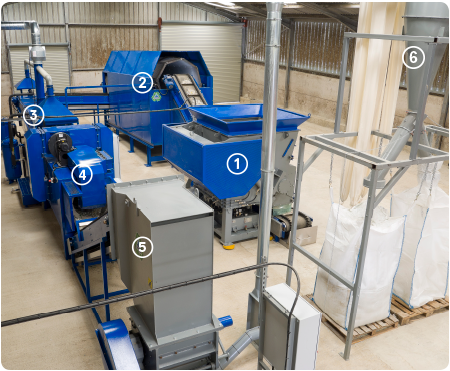
Complete Engineered Process to Deliver Fast, Efficient, Reliable Results
- Shred: plastics are either fed or dumped into the shredder, where they are macerated.
- Separate: plastics are fed through the rotary screen (trommel), removing small particles.
- Wash & Rinse: clean, separated plastics are sent through a rotating, heated wash and rinse process, while vent hoods extract excess moisture out of the plastics, and vent outside the building.
- Dry: clean, rinsed plastics are circulated through a hot air blower.
- Granulate: plastics are fed through the granulator, producing common-sized pellets
- Dispense: the granulated plastics are blown into a double-bagging station, fitted with a de-duster. The bagged material is ready for sale.

Feed Hoppers & Shredders
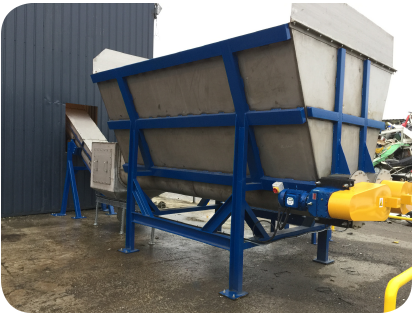
From a few cubic meters to large multi-chamber.
In the plastic recycling industry, feed hoppers are fitted with screw auger conveyors for the discharge. The diameter of the screw auger varies depending on the throughput requirement. For most applications, single screw discharge augers are ideal, but for large plastic recycling facilities, multiple screw augers may be necessary.
The multi-screw system uses the PLC to monitor the torque to avoid blockages. If a blockage occurs, the PLC can run the screws at different speeds and directions to free the blockage.

Float Sink Tanks
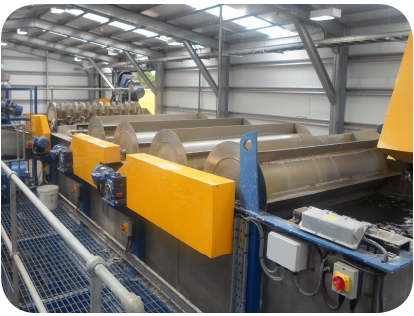
Separate multiple plastics, single or in series.
Float sink tanks are used for density separation of various types of plastics and also to remove contaminates prior to upstream processing. Water is used as the density media – ideal for the separation of polypropylene, polyethylene from PVC`s, and ABS, while allowing contaminates such as glass, metals or dirt to sink.
In some applications, the specific gravity of the water can be increased by the addition of various chemicals. This allows a series of our float sink tanks to be operated for the separation of a range of plastics.

Plastics Washing
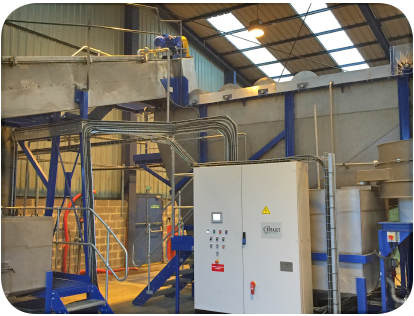
Removal of high contamination loads.
Prewashing systems operate with a rotated auger and spray, to remove of high loads of contamination prior to friction washing.
Friction washing uses a high pressure spray, impinging on the surface of the plastic as it is transferred up an incline conveyor. For more demanding cleaning applications, a heated detergent solution can be used. The wash material and contamination drains down the incline screw into a vibratory sieve. The sieve filters the solution, which is then pumped to storage tanks for reuse.

Plastics Drying

Thermal of mechanical, horizontal or vertical.
The horizontal mechanical dryer is the most efficient way of dewatering granulated and shredded rigid plastics a film down to moisture levels around 1% (for rigids.) The machine is fitted with a rotor which rotates at high speed (1450 rpm typically), the rotor is fitted with easy-to-change wear paddles manufactured from D2 steel.
Alternatively, the drum dryer (pictured), accepts wet shredded plastics into the machine via conveyor. The dryer is fitted with a high volume hot air blower. The used hot air is recirculated for resuse, ensuring an operating temperature is achieved in a short cycle time. Typically the thermal drum dryers are used when very low moistures are required or when a there is a waste heat energy from a plant; the waste heat can be transferred via heat exchanger into drying plastics.

Granulators
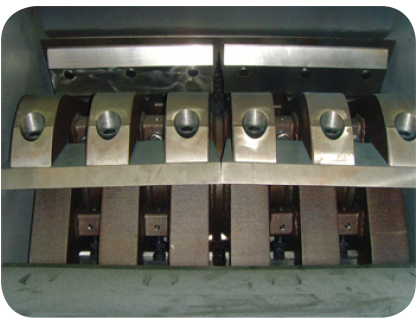
Consistent, high-quality granulate.
Our granulators are designed specifically for the recycling industry. The machines are supplied as standalone units or part of a full-scale recycling system, combining washing, drying separation and product transfer.
The completely welded heavy steel manufactured construction is designed to withstand the most demanding and universal applications due to the removable deflector wedge (third stator knife). Rotor bearings, knife mounts and rotor shaft are over-sized to cope with extreme feed stock.

